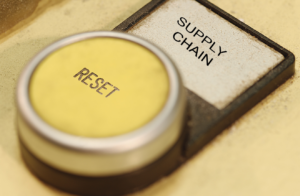The impact of the Covid-19 pandemic on ecommerce is well documented. In the United Kingdom, reports Fiona Briggs, Editor of Retail Times, “Online sales in the retail sector saw five years of growth in just 12 months in 2020 as restriction and lockdowns shifted consumer spending to online, and away from physical stores. Online sales accounted for 19% of retail spending in 2019, compared to 28% in 2020.”[1] She also notes, “The Coronavirus pandemic permanently changed the shopping habits of two in five consumers, according to a new survey by NatWest and Retail Economics. During 2020, almost half of consumers (46%) made a new online purchase that they only previously made in-store.” A similar pattern was seen around the globe. Ali Amarsy, Senior Vice President of Global Product Strategy at Publicis Commerce, writes, “COVID-19 has catapulted us into the future. In 2020, global e-commerce sales growth jumped three years in the first three months of stay-at-home mandates, with a share of overall retail matching 2023 predictions. … Huge shifts in consumer behavior have left many businesses, often working in outdated systems and processes, faced with new challenges as they try to capture increased demand.”[2] Retail correspondent Melissa Repko (@melissa_repko) reports, “Consumers across the globe spent $900 billion more at online retailers in 2020 versus the prior two-year trend, according to report from the Mastercard Economics Institute. … Nearly every retailer’s online sales jumped as shoppers were stuck at home. As consumers picked up online purchases in the parking lot and got packages or takeout dropped at their doorsteps, e-commerce made up about $1 out of every $5 spent on retail globally. That’s an increase from about $1 out of every $7 spent in 2019.”[3]
Even before the pandemic, consumers were increasingly taking the digital path to purchase and retailers were responding by beefing up omnichannel processes. Nevertheless, Norman Reyneker, Retail, Sales and Shopper Director at Kantar, insists retailers should not become complacent. “As companies define their future-fit commercial strategies,” he writes, “they also need to challenge some of their widely held assumptions related to the evolving digital retail landscape. Here’s why … The rise of technology has helped shape a new generation of consumers that is more informed, and more powerful, than ever.”[4] Below are some thoughts about what businesses and consumers need to think about in this ever-increasing world of online commerce.
Retailers and the Future of Ecommerce
Reyneker notes, “The rise of digital commerce has been a defining feature of the last decade. Since smartphones began serving as magical portals to digital realms, we have seen the emergence of new roles, new business units and entirely new businesses capitalizing on the commercial potential of the new cyberspace in which people were increasingly spending their time.” He adds, “As we journey deeper into the next decade, we will see many of the widely held assumptions related to digital commerce challenged and upended — to quote the oft-quoted modern business management consultant Peter Drucker, ‘the greatest danger in times of turbulence is to act with yesterday’s logic.'”
Retailers also need to be keenly aware of current trends. Repko observes, “Long-term e-commerce gains will be uneven and will depend on what a retailer sells, how they adapted their business model and how consumers prefer to shop. For some merchandise, such as clothing, shoppers may prefer to go back to brick-and-mortar stores where they can try on an outfit before buying it. In certain retail categories, such as electronics, online purchases already drove a larger share of overall sales, so there was less room to grow. Grocery and discount stores will see the most dramatic and lasting shift to e-commerce.” In order to remain abreast of the latest trends, retailers need to leverage near-real-time data and cognitive computing solutions, like the Enterra Supply Chain Optimization System™, to understand current consumer behavior and economic patterns. To avoid falling victim to victim to “yesterday’s logic,” Reyneker suggests retailers consider the following over the next decade:
The “always connected” consumer. Reyneker explains, “While digital has long been understood as another space, separate to our physical existence, the line between ‘digital’ and physical disappears completely when we look to the future. The Spatial Web will coat our physical environments with invisible layers of intelligence, and tangible, physical things will be recreated in virtual spaces, all without conscious engagement with handheld or wearable devices.”
Retail as a service. Because consumers will always be connected, Reyneker insists this means “that any and every space, whether physical or digital, has commercial potential in 2030. Firstly, this calls for us to re-evaluate the role of physical space in retail, which should increasingly serve as a point of contact, fulfilling social and emotional expectations — not just a functional point of sale. Secondly, when every space has commercial potential, it is the job of marketers and retailers to work together to optimize and ease the path to purchase, which might mean enabling access to new kinds of marketplace, new payment or ownership and partnership models, or even authenticating transactions. Retail is about service provision in 2030, not just sales.”
A new consumer and shopper perspective. According to Reyneker, “The labels of ‘consumer and shopper’ (which imply passively receiving, and unknowingly assuming responsibility for the outputs of a linear supply chain) are becoming outdated. Ubiquitous connectivity, transformed social values and regulatory pushes flatten the information landscape and democratize access to the marketplace. We can therefore anticipate a 2030 in which individuals are ‘nested’ within human-centric ecosystems and ‘closed loop’ supply chains, in which people contribute as much as they consume, and in which value exchanges are better understood.” If the circular economy becomes more prevalent, consumers and retailers will naturally have a more symbiotic relationship than they do today.
One clear lesson retailers should learn is that a digital, omnichannel strategy is essential to future success. Journalist Peter Moody notes, “Consumers are demanding a faster pace of change from brands and their customer services. Even after a year of enormous shift to online, brands across the spectrum are falling behind in meeting consumers’ expectations of a good digital experience. Younger consumers between the ages of 18 and 24-years-old are more than twice as likely as older shoppers to be put off purchasing if they have a clunky digital experience, according to research by MullenLowe Profero.”[5]
Concluding Thoughts
Like Reyneker, Moody predicts retailers that act based on yesterday’s logic may find themselves in history’s dustbin. He writes, “The consumer has decided that the brands who are brave enough to think differently in order to get their digital experiences right, will end up owning this new brand experience world. The hierarchy for retail has changed. A huge high street presence is not a guarantee of success. The tectonic plates for online retail are still shifting. Those who fall behind will be those who apply old rules to a new world.” To succeed, Reyneker insists, retailers need to create a consistent total brand experience. To achieve that goal, he writes, retailers and brands need a clear digital ambition, an innovation culture, an agile organization, a high digital IQ, and the use of an insights engine (i.e., cognitive computing solutions). As the vocal group Imagine Dragons, might say, “Welcome to the new age.”
Footnotes
[1] Fiona Briggs, “Five years of online sales growth in 12 months, permanently shifts shopping habits for two in five consumers, Nat West reports,” Retail Times, 12 February 2021.
[2] Ali Amarsy, “The future of commerce is here. Are you ready?” Think with Google, November 2020.
[3] Melissa Repko, “Consumers spent $900 billion more online in 2020. Here’s who will keep the biggest gains,” CNBC, 5 April 2021.
[4] Norman Reyneker, “#EcommerceDay2021: Redefining retail – A future view of digital commerce in 2030,” Bizcommunity, 8 March 2021.
[5] Peter Moody, “The retail behemoths of the future will be the ones crafting a seamless online platform,” City A.M., 3 April 2021.





